nanoscale
Latest
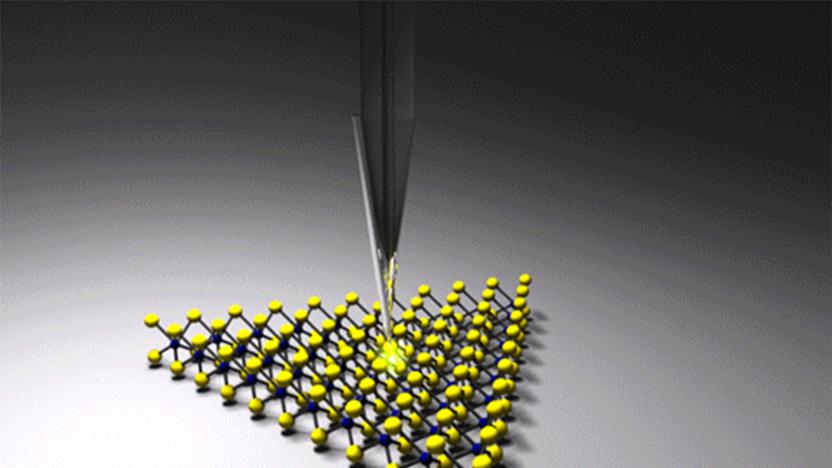
'Squeezed' light might produce breakthroughs in nano-sized electronics
A 'magic wand' squeezes light into a nano-sized point that could lead to breakthroughs in ultra-small devices.
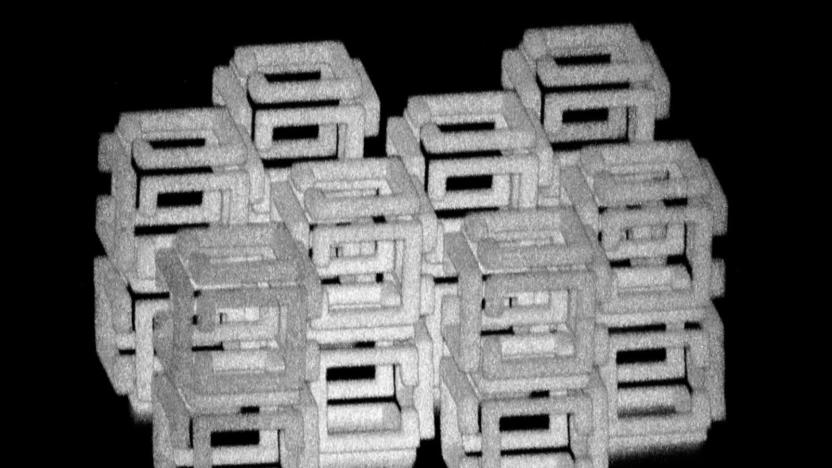
MIT can shrink 3D objects down to nanoscale versions
It's difficult to create nanoscale 3D objects. The techniques either tend to be slow (such as stacking layers of 2D etchings) or are limited to specific materials and shapes. MIT researchers might have a better way -- they've devised a technique for making nanoscale versions of 3D objects using a wide variety of materials and shapes. The team ultimately reversed a process for imaging brain tissue, whittling a relatively large object down to a creation one thousandth its original size.

Extremely detailed images of living cells can now be taken over time
Advanced microscope technology now lets us view objects at the nanoscale, meaning, when it comes to biology, we can see details of living cells that were never possible before. But doing that comes with a few requirements that have been fairly limiting. For instance, you have to be able to pack a lot of fluorescent dye into the object you want to see and you need that dye to be really stable. Typically, those sorts of dyes grab onto proteins in the object, but proteins are often not distributed densely enough, limiting how much dye can be introduced. Also, these fluorescent dyes tend to bleach out really quickly, only giving researchers a few seconds of imaging time.
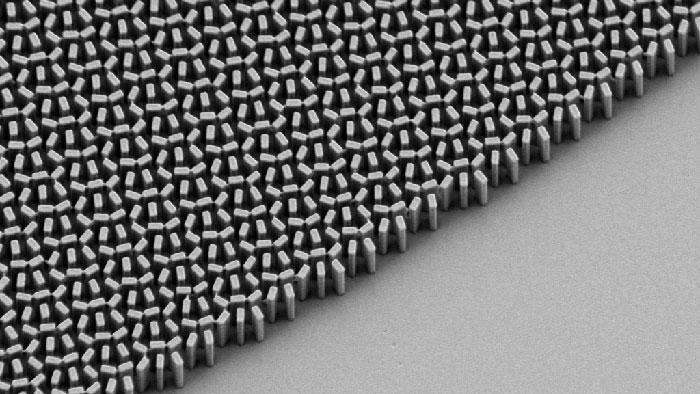
Lenses made from nanomaterials get closer to replacing glass
Researchers recently showed off breakthrough nanomaterial "metalenses" that could replace bulky glass optics. There was one problem, though -- it only worked on a single color at a time, meaning your smartphone could only do arty, monochromatic photos. However, the same team at Harvard's School of Engineering and Applied Sciences (SEAS), has unveiled a new material that works on a spectrum of colors from blue to green, opening up potential applications in specotroscopy, sensing and imaging.
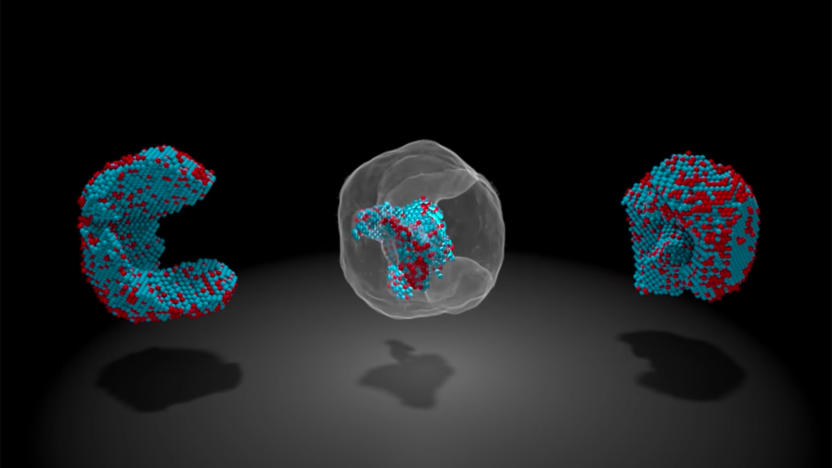
Scientists map every atom inside a nanoparticle
Even the smallest defects can create serious problems. It's a good thing, then, that researchers have found a way to map nanoparticles at an "unprecedented" level of detail -- they've located the 3D positions of all 23,000 atoms in an iron-platinum particle. The group used an extremely high-resolution transmission electron microscope (TEAM I) to capture 2D projections of the nanoparticle's structure, and used an algorithm to stitch those together into a 3D reconstruction. If there's a missing or misplaced atom, you could easily spot it.
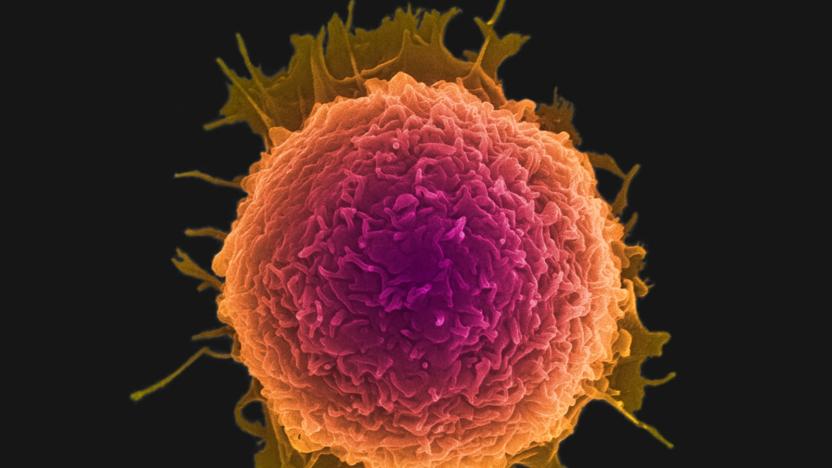
Nano-sized discs teach your body to fight cancer
In the future, getting customized cancer treatments might just be a matter of injecting virtually invisible discs into into your body. University of Michigan scientists have had early success testing 10nm "nanodiscs" that teach your body to kill cancer cells. Each disc is full of neoantigens, or tumor-specific mutations, that tell your immune system's T-cells to recognize those neoantigens and kill them. When you pair them up with immune checkpoint inhibitors (which boost the T-cells' responses), they can not only wipe out existing tumors, but prevent them from reemerging later.

Nanotubes can turn water solid when it should be boiling
Scientists have long known that under the right conditions, small amounts of water can be coaxed into changing its boiling or freezing point. A pot of water takes less energy to boil on the top of Mount Everest, for instance, and liquid under pressure takes a little more heat to convert into steam. A group of researchers at MIT has recently taken this effect a step further -- observing that water in nanotubes can actually freeze into a solid at temperatures well beyond its natural boiling point.

Nanomachines just won the Nobel Prize in Chemistry
If you want to know how far nanotechnology has come, you only need to ask the Royal Swedish Academy of Sciences. It just awarded the Nobel Prize in Chemistry to researchers Bernard Feringa, Jean-Pierre Sauvage and Sir J. Fraser Stoddart for their work on the "design and synthesis of molecular machines." All three have been instrumental to making nanomachines possible. Sauvage kicked things off in 1983, when he linked ring-shaped through a mechanical bond instead of the usual electron-sharing bond. Stoddart carried the torch when he slipped a moving molecular ring on to an axle in 1991, while Feringa built the first molecular motor in 1999.

Nano-sized metal fish deliver targeted drugs to your body
Doctors have long dreamed of delivering drugs to specific parts of your body, and they may soon have a clever way to do it: fish. UC San Diego researchers have developed nanoscale metallic fish (they're just 800 nanometers long) that could carry medicine into the deeper reaches of your bloodstream. Each critter has a gold head and tailfin, as well as a nickel body joined by silver hinges. You only have to subject them to an oscillating magnetic field to make them swim -- there's no need for propellers or a passive (read: slow) delivery system. That, in turn, could make the drug carriers smaller even as they move quickly.

The After Math: She blinded me with science
This was a pretty good week for all but VHS enthusiasts. NASA tested a new lightweight rocket material. The Kepler space telescope found a couple of potentially habitable exoplanets. Researchers built a robot out of a sea slug. And scientists at TU Delft went ahead and solved that whole nanoscale data storage issue. Numbers, because it's "rocket science", not "rocket art".

ICYMI: Computer chips cooled by 'blood,' tiny tank and more
#fivemin-widget-blogsmith-image-392885{display:none;} .cke_show_borders #fivemin-widget-blogsmith-image-392885, #postcontentcontainer #fivemin-widget-blogsmith-image-392885{width:570px;display:block;} try{document.getElementById("fivemin-widget-blogsmith-image-392885").style.display="none";}catch(e){}Today on In Case You Missed It: IBM Research in Zurich is using fluid to both power and cool computer chips, modeled off of the way the human brain works. University of Southampton scientists created small glass discs for mega data storage that they say can survive for billions of years. A new unmanned ground vehicle that's basically a DIY tank is available for all those die-hard infantry fans. If you need your dose of nature, check out the video from a Minnesota-based YouTuber of the ice on Lake Superior breaking. As always, please share any interesting science or tech videos, anytime! Just tweet us with the #ICYMI hashtag to @mskerryd.

'5D' discs can store data until well after the sun burns out
Researchers at the University of Southampton's Optical Research Center announced on Tuesday that they've perfected a technique that can record data in 5 dimensions and keep it safe for billions of years. The method etches data into a thermally stable disc using femtosecond laser bursts. The storage medium itself holds up to 360 TB per disc, can withstand temperatures up to 1000 degrees C and are estimated to last up to 13.8 billion years at room temperature without degrading.

Microscope can scan chemical processes in real-time
Atomic force microscopes are the tool of choice to see the tiniest atomic structures, right down to hydrogen bonds. The drawback with current models is that they're too slow to create anything but static images, making them useless for processes like chemical reactions. However, MIT researchers have created a prototype model that's 2,000 times faster than any commercial product, making it feasible for video (below). "People can see, for example, condensation, nucleation, dissolution or deposition of material in real-time -- things [they've] never seen before," says MIT professor Kamal Youcef-Toumi.
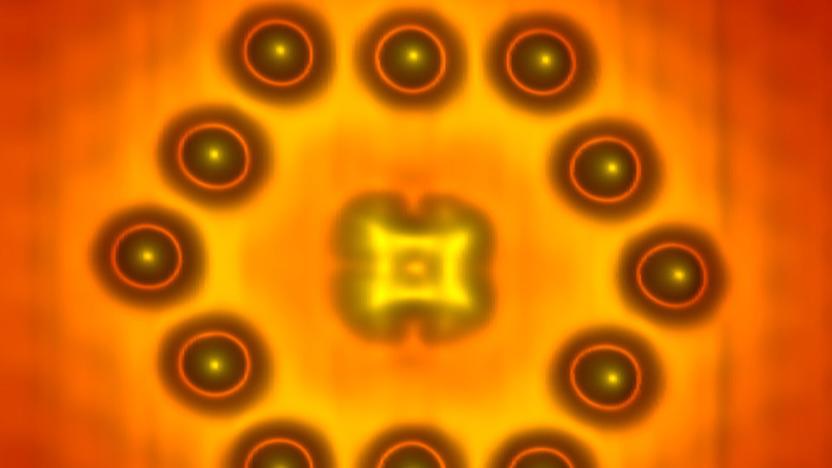
Scientists make a transistor from a single molecule
You're looking at what could be not just one of the smallest semiconductor parts ever, but one of the smallest semiconductor parts possible. A worldwide research team has built a transistor that consists of a single copper phthalocyanine molecule, a dozen indium atoms and an indium arsenide backing material. The trick was to abandon the usual mechanics of a transistor, which normally controls current by modulating the gate voltage, in favor of a field effect. Here, you only need to vary the distance of the gate (in this case, the atoms) to modulate electricity.

Moore's Law in action: making our machines ever more micro
Over the past few decades, engineers have leveraged Moore's Law to the fullest, resulting in powerful ultrathin laptops and feature-rich miniature wearables. Back in 1981, a 23-pound Osborne 1 computer was considered portable, with 64KB of onboard memory. Today, smartphones weigh just a few ounces and easily pack 128GB of storage. There's also a vastly more complex architecture of circuits and sensors inside these devices, all at a scale nearly invisible to the eye. It's taken us decades to develop and shrink down these microelectronics to where they are today, which is no small feat. Join us as we ride the ever-shrinking gadget wave from its early days to some of the nanoscopic creations at work today.

Here's how 'flawless' materials break on a nanoscopic scale
Have you ever wondered why a supposedly defect-free material ends up cracking? University of Pennsylvania researchers have an answer. They've studied supposedly flawless materials (in this case, palladium nanowires) to see how they break on a nanoscopic level. As it turns out, these failures usually come down to atoms floating around when their bonds break, usually with little change in temperature. It's seemingly random, too, since the bonds vary widely from atom to atom. The scientists hope that identifying these weak points will help design devices that hold up under strain, even at the smallest possible level. Don't be surprised if you're one day using gadgets that are much more reliable, even at the smallest possible levels. [Image credit: VladKol/Shutterstock]

Lasers quickly load thousands of cells with nano-sized cargo
Doctors dream of injecting cells with large nanoscopic cargo to treat or study illnesses. The existing approach to this is extremely slow, however. At one cell per minute, it would take ages to get a meaningful payload. That won't be a problem if UCLA scientists have their way, though -- they've developed a technique that uses lasers to inject legions of cells at a time. The concentrated light heats up the titanium coating on a chip until it boils water surrounding the target cells, creating fissures that let the cargo inside. It only takes 10 seconds for the laser to process an entire chip's worth of cells, and researchers estimate that they could fill a whopping 100,000 cells per minute.

Here's how a lithium-ion battery degrades over time
Use a gadget with a lithium-ion battery inside and you'll eventually learn that these power packs decay once you've cycled them enough times. But have you ever wanted to see direct evidence of why they have a limited lifespan? The Department of Energy is happy to oblige. It developed a special device that, when placed inside an electron microscope, lets it take nanoscale pictures of lithium-ion cells as they drain and charge. As you can see above, lithium (the black fluff in these photos) temporarily deposits on electrodes during each cycle, but doesn't completely dissolve. The more you use a battery, the more permanent deposits you get and the less capacity you have.

The world's smallest magazine cover is 2,000 times smaller than a grain of salt
No, National Geographic Kids didn't forget to buy colored ink -- that's a blown-up view of the smallest-ever magazine cover, created by IBM to set a Guinness world record. The tech firm used a miniscule, heated silicon "chisel" to etch a polymer image measuring just 11 micrometers by 14 micrometers, or 2,000 times tinier than a grain of salt. The image is more detailed than you might expect at such a miniscule size, too. IBM's instrument responds to subtle changes in pressure in the same way that a 3D printer might, giving it accuracy down to a single nanometer.

Sharp 'Moth Eye' LCD Panel demo shows off future HDTVs with less glare
While its high pixel density mobile displays stole much of the attention at CEATEC 2012, Sharp also has tech destined for bigger screens like this "Moth Eye Panel" that Engadget Japanese took a look at during the show. Thanks to nanoscale irregularities on its surface similar to the eye of a moth it claims to give bright colors and high contrast while cutting down glare as seen above (moth eye panel on the left) The technology isn't in use yet, but Sharp says the film has been produced in 60-, 70- and 80-inch sizes already, so if you thought the company's extra large and Elite HDTVs couldn't get any better, next year's model will probably have at least one way to prove you wrong.







